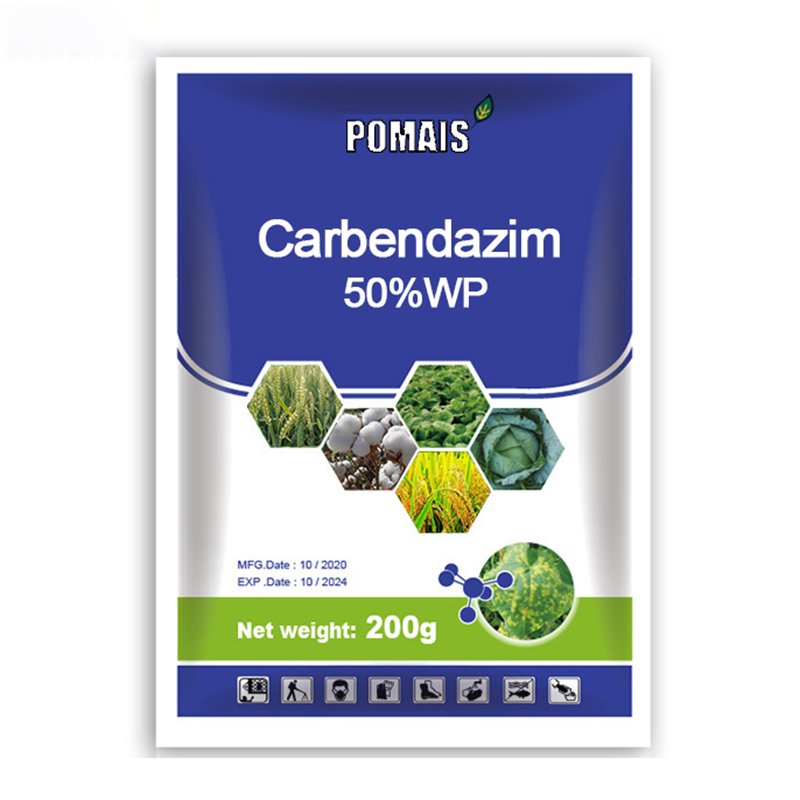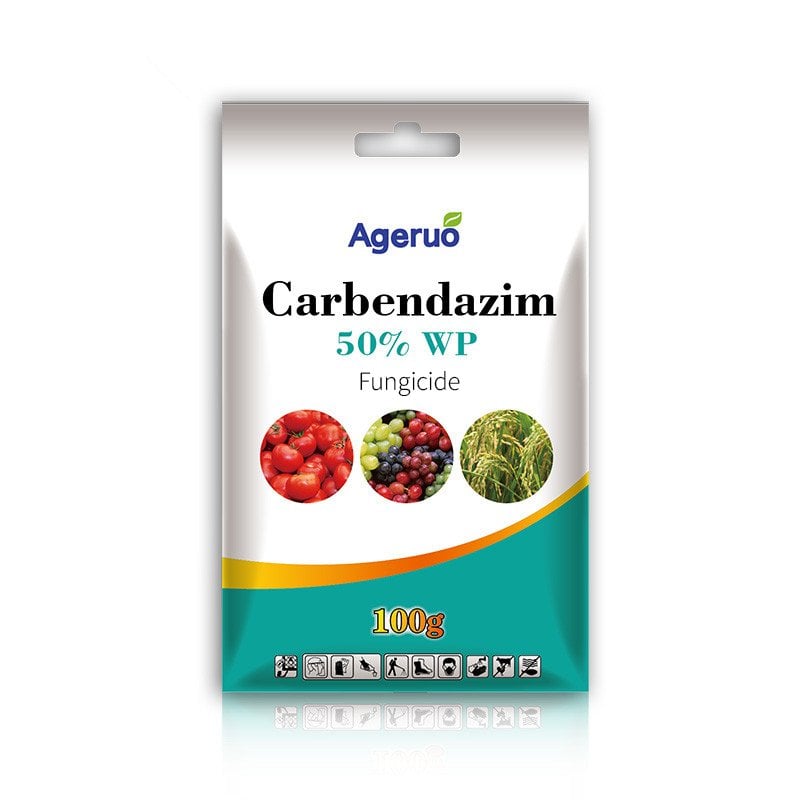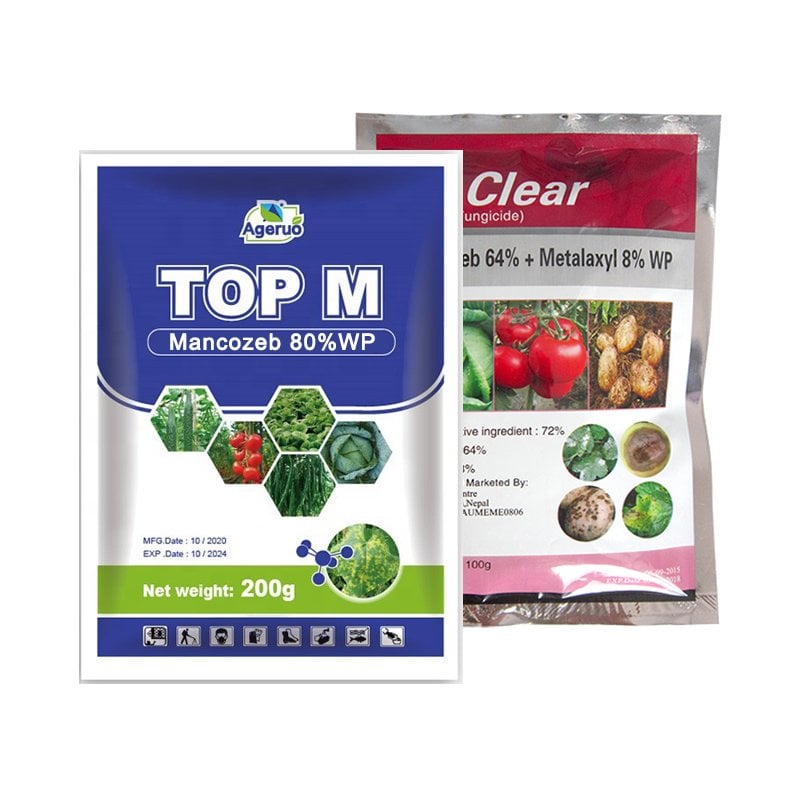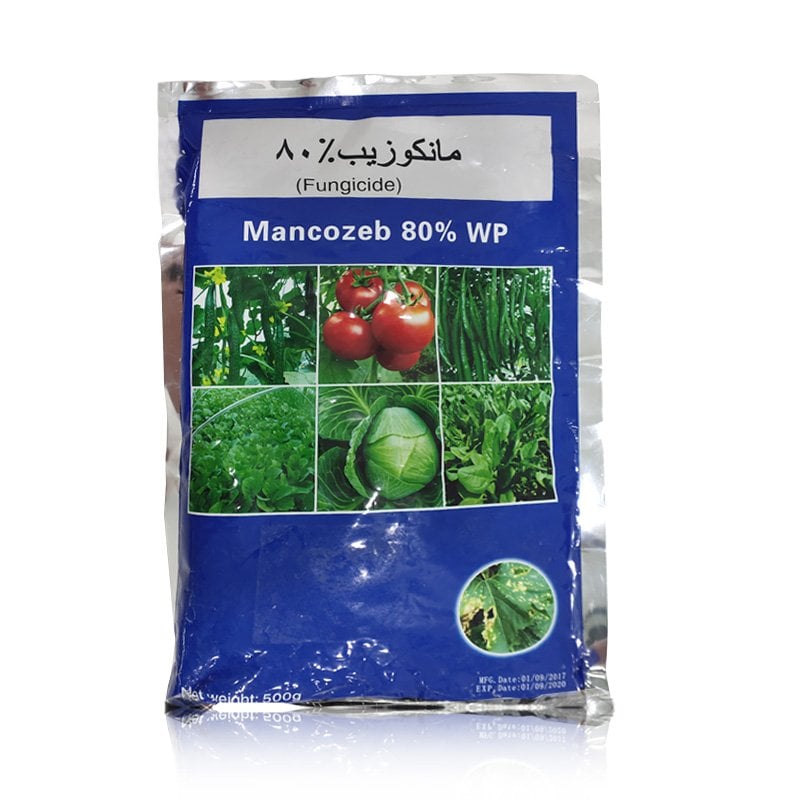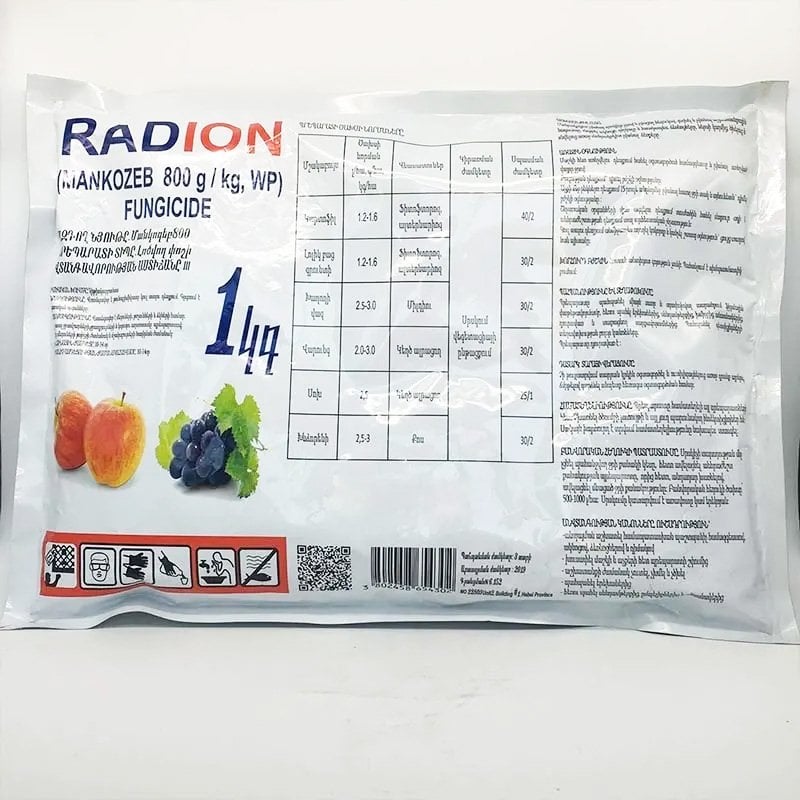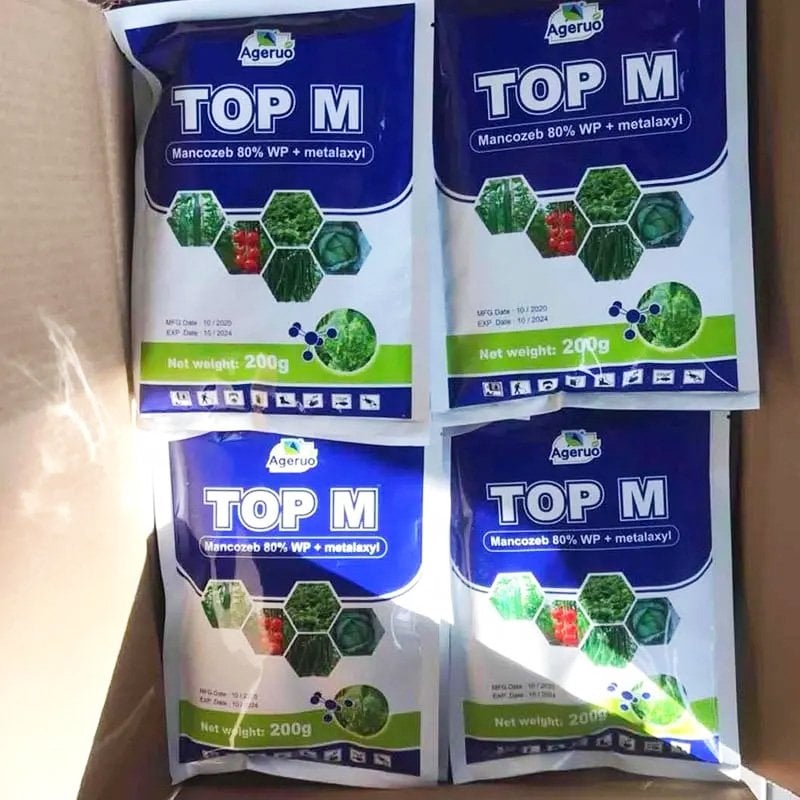Carbendazim + Mancozeb Fungicide Combination
The combination of carbendazim and mancozeb forms a powerful broad-spectrum fungicide widely used to protect crops from various fungal diseases. By combining these two active ingredients, this fungicide mix leverages the complementary actions of both components to offer enhanced protection for crops in different growth stages.
Carbendazim
1. What is Carbendazim?
- Carbendazim is a systemic fungicide that is absorbed by plants, allowing it to circulate within the plant tissue. This systemic action provides long-lasting internal protection against fungi, particularly in protecting plant parts that are difficult to reach.
2. Mode of Action
- Carbendazim belongs to the benzimidazole class of fungicides and works by inhibiting fungal mitosis, specifically by disrupting microtubule formation. This action prevents the fungus from growing and reproducing, leading to its elimination.
3. Targeted Diseases and Pests
- Carbendazim is effective against a range of fungal diseases, especially those caused by Ascomycetes and Basidiomycetes, such as:
- Powdery mildew
- Anthracnose
- Leaf spots
- Stem rot
4. Popular Formulations
- Available as wettable powder (WP), suspension concentrate (SC), and water-dispersible granules (WDG).
5. Common Crops Treated with Carbendazim
- Used widely on fruits, vegetables, ornamentals, and cereals, providing internal plant protection through its systemic action.
Mancozeb
1. What is Mancozeb?
- Mancozeb is a contact fungicide that remains on the plant’s surface and protects against fungal invasion. It belongs to the dithiocarbamate class of fungicides and is especially effective in preventing fungal spores from germinating.
2. Mode of Action
- Mancozeb works by inhibiting multiple enzyme functions in fungal cells. Its multi-site action disrupts cellular processes, preventing the fungus from developing resistance easily.
3. Targeted Diseases and Pests
- Effective against a variety of fungal diseases that thrive on plant surfaces, including:
- Downy mildew
- Blights
- Rusts
- Leaf spots
4. Popular Formulations
- Available in wettable powder (WP), flowable concentrate (FC), and granule (GR) formulations, designed for easy application and high coverage.
5. Common Crops Treated with Mancozeb
- Widely used on fruits (like grapes and apples), vegetables (such as tomatoes and potatoes), and field crops like wheat and rice.
Combining Carbendazim and Mancozeb: Enhanced Fungicide Efficacy
1. Why Combine Carbendazim and Mancozeb?
- The combination of carbendazim’s systemic action and mancozeb’s contact protection creates a comprehensive fungicide that protects plants both externally and internally. This mix provides broad-spectrum control, making it highly effective against multiple fungal pathogens across various crop types.
2. Formulations and Common Types
- The combination is often available as a wettable powder (WP), suspension concentrate (SC), or water-dispersible granule (WDG), allowing flexibility in application depending on crop needs and environmental conditions.
3. Applications and Usage
- This combination can be applied preventatively or at the early signs of fungal infection to prevent the spread and establishment of diseases. It’s typically applied through foliar sprays for even coverage.
4. Targeted Fungal Diseases
- Effective against a range of fungal diseases, particularly:
- Blights (on tomatoes and potatoes)
- Leaf spots (on fruits and vegetables)
- Mildews and rusts (common on grapes, wheat, and ornamentals)
5. Benefits of the Carbendazim + Mancozeb Combination
- Broad-Spectrum Protection: Combines systemic and contact action, providing internal and external protection to plants.
- Long-Lasting Control: Carbendazim’s systemic action offers residual protection within the plant, while mancozeb remains on the surface for immediate defense.
- Resistance Management: Mancozeb’s multi-site action helps prevent the development of resistance, while carbendazim’s targeted action provides lasting internal protection.
- Reduced Application Frequency: Due to the residual action of carbendazim, crops require fewer applications over the growing season.
6. Crops and Market Demand
- This fungicide combination is widely used in fruit orchards, vineyards, vegetable farms, and field crops in regions with high fungal disease pressure. Countries with humid climates, such as those in Asia and South America, favor this mix due to its effective control of common fungal diseases in moisture-rich environments.
Application Precautions
- Avoid application during rain to prevent washing off the contact fungicide (mancozeb).
- Follow dosage instructions to minimize the risk of residue on edible crops.
- Rotate with other fungicides to avoid over-reliance on one fungicide mix, supporting better resistance management.
Conclusion
The combination of carbendazim and mancozeb offers a powerful, dual-action approach to managing fungal diseases in agriculture. With both contact and systemic protection, this fungicide mix provides broad-spectrum disease control, reduced resistance development, and long-lasting crop protection. By offering internal and external defense, carbendazim + mancozeb ensures healthier plants, higher yields, and supports sustainable crop management practices.
The combination of carbendazim and mancozeb forms a powerful broad-spectrum fungicide widely used to protect crops from various fungal diseases. By combining these two active ingredients, this fungicide mix leverages the complementary actions of both components to offer enhanced protection for crops in different growth stages.
Carbendazim
1. What is Carbendazim?
- Carbendazim is a systemic fungicide that is absorbed by plants, allowing it to circulate within the plant tissue. This systemic action provides long-lasting internal protection against fungi, particularly in protecting plant parts that are difficult to reach.
2. Mode of Action
- Carbendazim belongs to the benzimidazole class of fungicides and works by inhibiting fungal mitosis, specifically by disrupting microtubule formation. This action prevents the fungus from growing and reproducing, leading to its elimination.
3. Targeted Diseases and Pests
- Carbendazim is effective against a range of fungal diseases, especially those caused by Ascomycetes and Basidiomycetes, such as:
- Powdery mildew
- Anthracnose
- Leaf spots
- Stem rot
4. Popular Formulations
- Available as wettable powder (WP), suspension concentrate (SC), and water-dispersible granules (WDG).
5. Common Crops Treated with Carbendazim
- Used widely on fruits, vegetables, ornamentals, and cereals, providing internal plant protection through its systemic action.
Mancozeb
1. What is Mancozeb?
- Mancozeb is a contact fungicide that remains on the plant’s surface and protects against fungal invasion. It belongs to the dithiocarbamate class of fungicides and is especially effective in preventing fungal spores from germinating.
2. Mode of Action
- Mancozeb works by inhibiting multiple enzyme functions in fungal cells. Its multi-site action disrupts cellular processes, preventing the fungus from developing resistance easily.
3. Targeted Diseases and Pests
- Effective against a variety of fungal diseases that thrive on plant surfaces, including:
- Downy mildew
- Blights
- Rusts
- Leaf spots
4. Popular Formulations
- Available in wettable powder (WP), flowable concentrate (FC), and granule (GR) formulations, designed for easy application and high coverage.
5. Common Crops Treated with Mancozeb
- Widely used on fruits (like grapes and apples), vegetables (such as tomatoes and potatoes), and field crops like wheat and rice.
Combining Carbendazim and Mancozeb: Enhanced Fungicide Efficacy
1. Why Combine Carbendazim and Mancozeb?
- The combination of carbendazim’s systemic action and mancozeb’s contact protection creates a comprehensive fungicide that protects plants both externally and internally. This mix provides broad-spectrum control, making it highly effective against multiple fungal pathogens across various crop types.
2. Formulations and Common Types
- The combination is often available as a wettable powder (WP), suspension concentrate (SC), or water-dispersible granule (WDG), allowing flexibility in application depending on crop needs and environmental conditions.
3. Applications and Usage
- This combination can be applied preventatively or at the early signs of fungal infection to prevent the spread and establishment of diseases. It’s typically applied through foliar sprays for even coverage.
4. Targeted Fungal Diseases
- Effective against a range of fungal diseases, particularly:
- Blights (on tomatoes and potatoes)
- Leaf spots (on fruits and vegetables)
- Mildews and rusts (common on grapes, wheat, and ornamentals)
5. Benefits of the Carbendazim + Mancozeb Combination
- Broad-Spectrum Protection: Combines systemic and contact action, providing internal and external protection to plants.
- Long-Lasting Control: Carbendazim’s systemic action offers residual protection within the plant, while mancozeb remains on the surface for immediate defense.
- Resistance Management: Mancozeb’s multi-site action helps prevent the development of resistance, while carbendazim’s targeted action provides lasting internal protection.
- Reduced Application Frequency: Due to the residual action of carbendazim, crops require fewer applications over the growing season.
6. Crops and Market Demand
- This fungicide combination is widely used in fruit orchards, vineyards, vegetable farms, and field crops in regions with high fungal disease pressure. Countries with humid climates, such as those in Asia and South America, favor this mix due to its effective control of common fungal diseases in moisture-rich environments.
Application Precautions
- Avoid application during rain to prevent washing off the contact fungicide (mancozeb).
- Follow dosage instructions to minimize the risk of residue on edible crops.
- Rotate with other fungicides to avoid over-reliance on one fungicide mix, supporting better resistance management.
Conclusion
The combination of carbendazim and mancozeb offers a powerful, dual-action approach to managing fungal diseases in agriculture. With both contact and systemic protection, this fungicide mix provides broad-spectrum disease control, reduced resistance development, and long-lasting crop protection. By offering internal and external defense, carbendazim + mancozeb ensures healthier plants, higher yields, and supports sustainable crop management practices.

